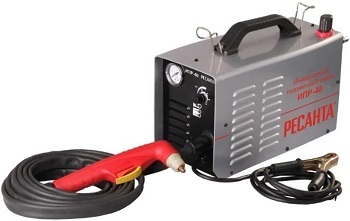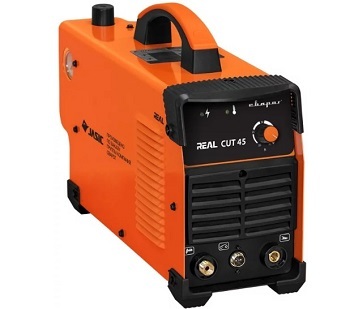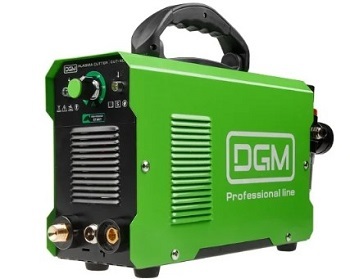Plasma cutter is a device designed for cutting metal using a plasma jet, into which air is converted using an electric arc. A temperature of 20,000 degrees and an air flow rate of 150 meters per second allow you to achieve an accurate and precise cut that is not possible with a conventional gas-oxygen flame. How to choose the best plasma cutter and what 5 tools deserve the closest attention, we will tell in this article.
CONTENT
- 1 What to look for when choosing a plasma cutter
- 2 Top 5 best plasma cutters
- 3 FAQ
What to look for when choosing a plasma cutter
Appointment. Usually there are two types of plasma cutters:
- for manual cutting - light and compact manual models of household and semi-professional classes. They are inexpensive, do not take up much space, but require a firm hand and a certain skill;
- for automatic cutting - real machine tools with numerical control, which are installed on separate beds. They are very accurate and efficient, but the price, size and the need for customization make them a purely professional machine.
Cooling type. Plasma cutters use two types of cooling:
- air cooling - when the apparatus is cooled naturally with the help of atmospheric air. This is how affordable, but not the most productive, models work;
- water cooling - here the plasma cutter is cooled with the help of a technical liquid that circulates through special channels. Such cooling is used in powerful industrial models.
Gas used. Plasma cutters use:
- compressed air - a compressor and inexpensive consumables such as nozzles and electrodes are enough for the operation of the plasma torch. This makes this type of device relatively affordable for domestic use, although in terms of cut quality they are far from their analogs;
- argon, nitrogen, oxygen and gas mixtures - such plasma cutters are used in production. They are more expensive, require proper gases and fine tuning, but they provide first-class and fast industrial-grade cuts.
Ignition type. Different plasma cutters implement the ignition of the arc in different ways, which, in fact, creates the plasma. On this basis, plasma cutters can be distinguished:
- contact - to ignite the arc, you need to touch the product with a nozzle. It is inexpensive, but negatively affects the resource of the nozzle and is found only in budget models;
- pneumatic - creates an arc when the operator starts to supply gas: a convenient and nozzle-friendly solution;
- high-frequency - use a high-frequency pulse between the cathode and the anode of the nozzle to ignite. This is the most modern and neat option.
Metal thickness. The higher the current, the thicker the metal is able to cut through the plasma torch. It is believed that four amperes are needed for every millimeter of ferrous metal, and six amperes for every millimeter of non-ferrous metal. In this case, do not forget about some margin so that the device does not work for wear and tear. For example, for cutting steel with a thickness of 7 mm, it is better to take an apparatus with an output current of at least 30 amperes. In addition, it should be borne in mind that an aggregate that cuts through a 10-mm sheet cleanly can cope with 15 millimeters, but in the second case, the product will already need additional mechanical treatment.
Duration of inclusion. Determined as a percentage of the total running time. For example, a PV of 60% means that out of 10 working minutes, the plasma cutter will directly cut only 6 - the rest of the time it will need to rest. Domestic and semi-professional models rarely have a turn-on duration of more than 40-50%, while for industrial models it can reach 80%.
Compressor capacity. In the requirements for a plasma cutter, manufacturers usually indicate the compressor capacity (liters of air per minute), operating pressure (bar) and power (watts). If the plasma cutter needs higher parameters than the compressor can provide, then it must be replaced the latter for something more productive, otherwise the device will not work or will do it out of hand it’s bad. It is better to think about a performance margin of 20-30% here.
Hosepack length. This is a hose that connects the plasma torch to the compressor. Everything is simple here: a short hose is cheaper, lighter and more convenient, and a long one gives more room for maneuver. The choice must be made based on the specific working conditions.
Top 5 best plasma cutters
1. Cebora Power Plasma 3035 / M CNC CNC 279-01

Professional plasma cutter - reliable, expensive and efficient. Prices for this unit start at 141,000 rubles, but it costs every penny of this amount. The device is equipped with a high-frequency arc ignition system and provides a high quality cut in any conditions and at any time. The maximum power consumption is 2400 watts, the maximum current is 30 amperes, which allows for a cut thickness of up to 15 mm. To operate, the plasma cutter needs a compressor with a capacity of up to 60 liters per minute and a pressure of 3.5 bar.
Price: ₽ 141 474
Cebora Power Plasma 3035 / M
2. Fubag PLASMA 40

Manual inverter for plasma cutting of a semi-professional class with semi-automatic control. A high frequency is used to strike the arc. The on-time at the maximum current reaches 60%. The maximum welding current for continuous operation is 30 amperes. The cutting current can be adjusted in the range of 20-40 amperes, which allows cutting metal up to 15 mm thick. To operate, the plasma cutter needs a compressor capable of providing an air supply of at least 100 liters per minute at a pressure of 3.5 to 6 bar. The price of the device is about 39,000 rubles.
Price: ₽ 39 170
Fubag PLASMA 40
3. RESANTA IPR-40

Professional handheld inverter for plasma cutting. Produced under a well-known and trustworthy domestic brand. Equipped with high-frequency arc ignition. Provides a duty cycle at a maximum current of up to 35%. The cutting current can be adjusted from 15 to 40 amperes, which allows this torch to cut metal up to 12 mm thick. The air cooling system is simple and reliable. A very decent and reliable device, for which you will have to pay relatively little - less than 31,000 rubles.
Price: ₽ 30 780
RESANTA IPR-40
4. Svarog REAL CUT 45 (L207)

Plasma Inverter semi-professional class from a Russian brand. Hand-held tool, air-cooled. Equipped with a high frequency arc ignition system. The duty cycle at a maximum current of 30 amperes is 60%. Able to cut metal up to 12 mm thick. Requires a compressor with an air flow rate of at least 100 liters per minute and a pressure within 4 bar. The body is metal, resistant to damage. It's not a pity to pay 23,500 rubles for such a productive device.
Price: ₽ 23 590
Svarog REAL CUT 45
5. DGM CUT-40

Inexpensive plasma cutter with high-voltage contact ignition. It is capable of delivering amperage from 15 to 40 amperes, which allows it to cut ferrous metals up to 15 mm thick and non-ferrous metals up to 9 mm. It works with a compressor with a capacity of at least 150 liters per minute and an operating pressure in the range of 4.5-6 bar. Equipped with an ergonomic handle and a foldable carrying handle. The duty cycle at 20 degrees is 60%. With a price in the region of 16,500 rubles, it is one of the most affordable household devices for plasma cutting of metals.
Price: ₽ 16 470
plasma cutter DGM CUT
FAQ
How do you know when it is time to change the consumables of the plasma cutter?
It is believed that the nozzle and electrode should be replaced after 2-3 hours of continuous manual cutting and 3-5 hours of machine cutting. If you find it difficult to accurately determine the time, then you should pay attention to the appearance of the consumables (when it comes time to change them, wear is already visible both on the nozzle and on electrodes), on the quality of the cut (it gradually decreases), on the color of the flame and the sound during the operation of the plasma torch, as well as on its working height (it decreases with wear consumables).



